Neora Valley National Park
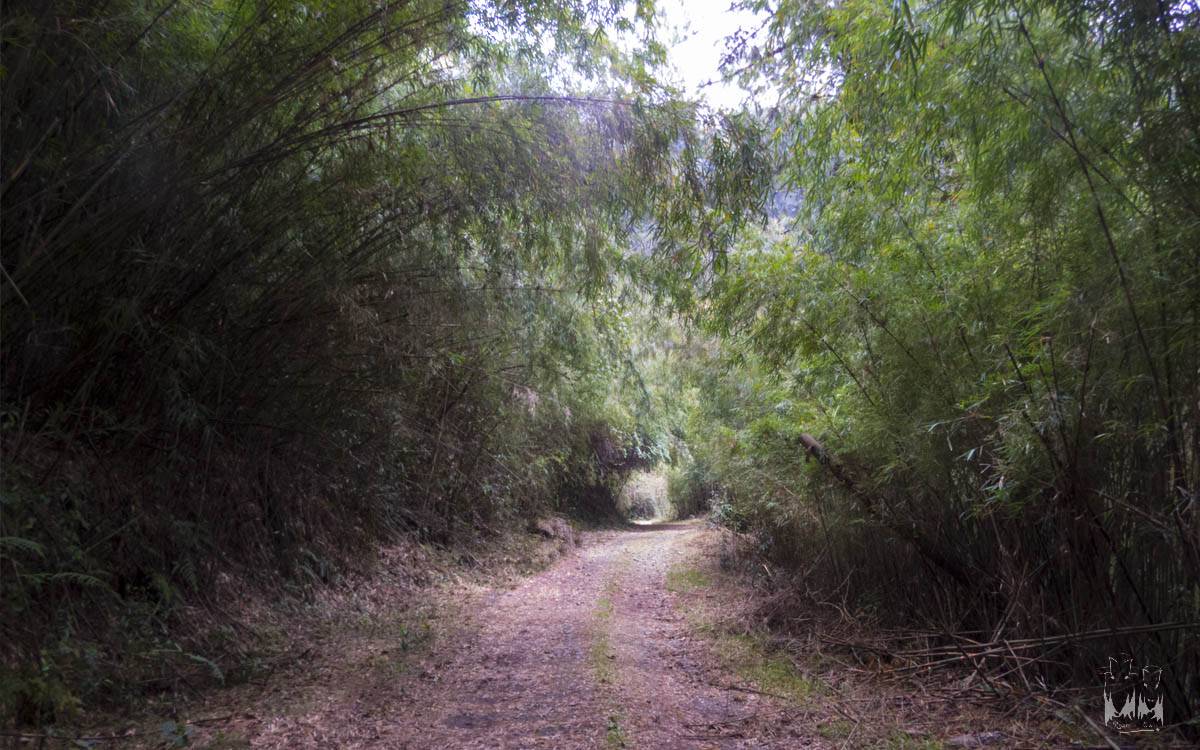
Bamboo forests of Neora valley national park
When it comes to birding in India, northern part of West Bengal is one of the hot spots and in that region , birding in Neora Valley is double the fun. The diversity of birds is amazing because of the diverse terrain in terms of vegetation. Situated right in the foothills of the Himalayas, the northern region of West Bengal borders the most bio diverse state of India, Sikkim . When you consider that Sikkim occupies only o.21 % of Indian land mass and the fact that it harbors nearly half of all birds found in India is an impressive info indeed.
So one has much better chance of spotting a new species here than anywhere else in India. When the situations look this good , then obviously there must be a catch ! The majority of birds are not that easy to spot or photograph because of the dense forests. While this region does boast of nice open meadows, majority of the terrain is quite inaccessible. 100 km travel can take you 5 hours to complete !
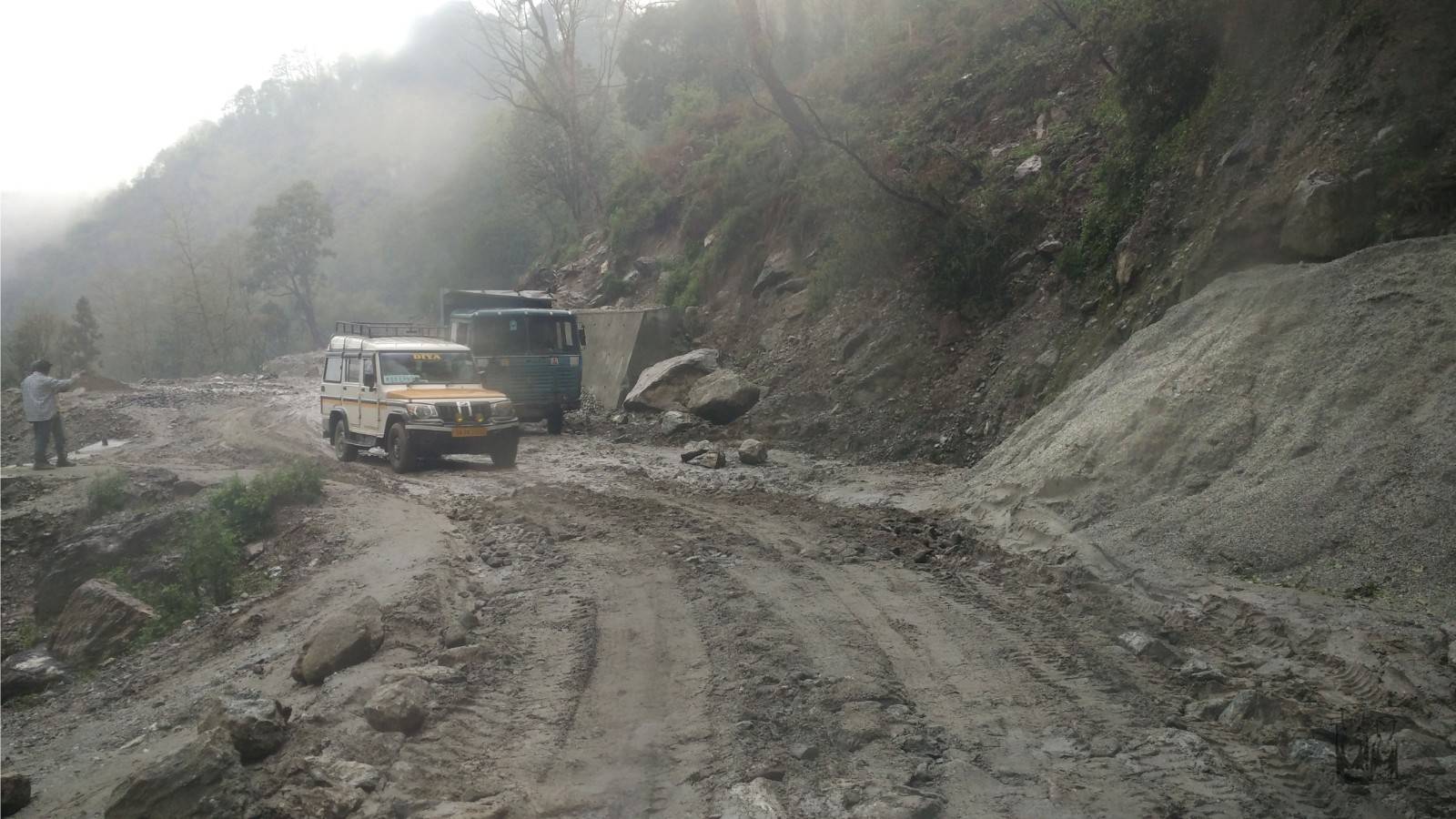
Himalayas are prone to frequent landslides and hence the roads are highly unpredictable.
Birding in Neora Valley
So when we decided to do birding in neora valley we decided to limit our travel and spend time walking as much as possible.
With this in mind we decided on Neora valley national park which was considered as one of the most biologically rich areas in the entire Indian Subcontinent. It is relatively a small protected area spanning around 90 sqkm but the area is pristine that even the endangered Red Panda call it a home.
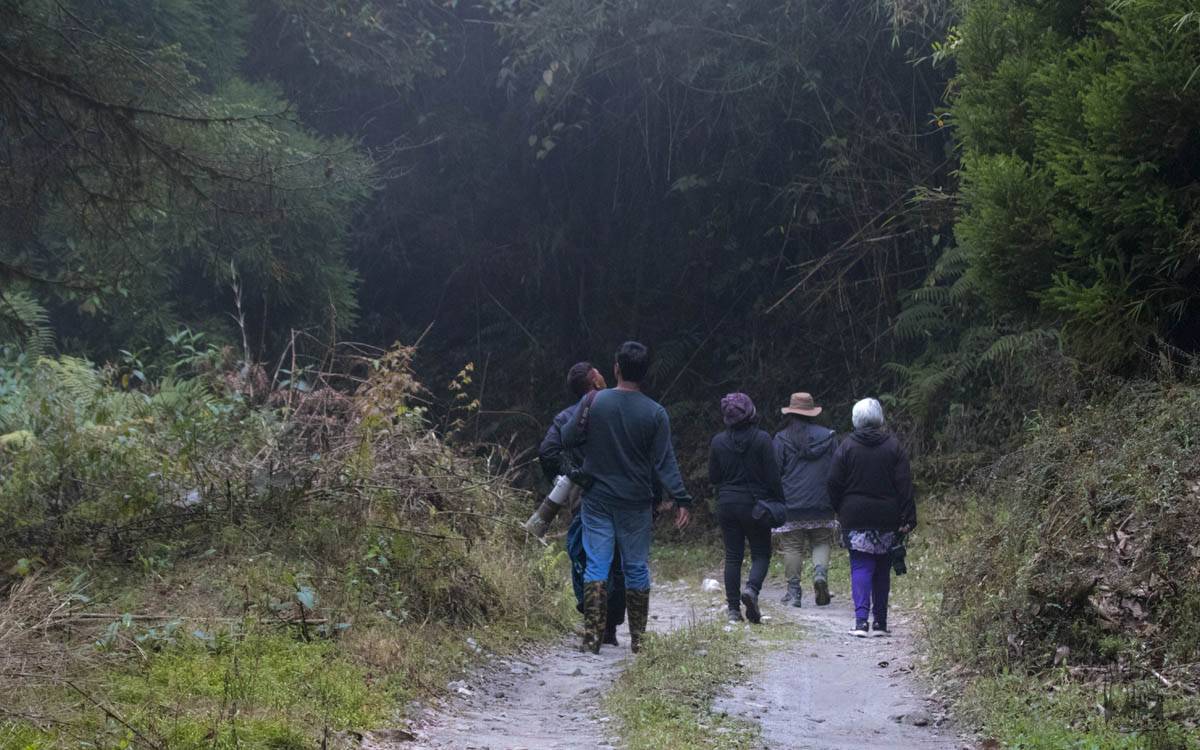
Returning on the jeep trail searching for birds. The entire party was tired but was still pushing to see that elusive one.
We stayed in the forest rest house situated near the edge of the forest. Because of its proximity to the forest , our birding started at our door itself. We were supposed to be starting at 5.30 in the morning to reach a forest road where we will do the birding. We had engaged a local bird guide to come with us , not to show us birds but it seems it was mandatory for entering the particular patch of forest. Me and Mathi were super excited and got up at 4.00 am and roamed around our cottages waiting for the first light. Our plan was to start the moment our guide came.
As the first light started to shine, the birds started chirping and singing. We were immersed in sounds. While we were excited and jumping around to search them, one man came and started staring at us. We thought he was the guide, but before we could approach him he went searching for someone. We continued birding, cursing the guide for being late. Meanwhile our partners for this trip also woke up and started looking for birds, all the while cursing the guide.

The red crossbill (Loxia curvirostra) is a small passerine bird of the Himalayas with an unusual beak for seed eating The beak criss crosses one another rather than close.
The same person came again and started to stare at us. This time after a couple of minutes he approached us and asked are we the birders. Then only we realized that , when we had spoken to him over phone we told him we were 5 people and he saw only two of us , so he had left and was searching for a team of 5. After blaming each other we quickly hopped on the vehicle and reached the place.
As expected the place was lush and serene with birds sounds being the only audible sound apart from us.

The dense forest and the beautiful morning light made us lose the vehicle in favor of walking.
The idea was to park the vehicle and then walk in search of birds but we kind of did a mix of two. Earlier I had mentioned that birding is quite tough because of the inaccessible terrain and when I mention terrain I should mean the vegetation too. The tall trees coupled with dense bushes means that even if you spot a bird , it is not easy to take a picture of it. The guide insisted that he played the bird sounds to attract the birds but we resisted because we are against any method which disturbs the bird. But he insisted that because of the dense bushes it will be hard to spot them unless they are drawn out. To be fair he was right.
While we spotted the Blue Tailed Minla and Bar Throated Siva in the initial moments our birding did face hiccups.
Neora Valley Birds
We were seeing movements all around and were hearing all sorts of bird calls but none of the birds took an open perch. Our guide was becoming restless as he could not show us the birds he wanted to. He now resorted to a clicking noise to attract birds which he made using a small wooden stick. We did not object as he had become desperate. To our surprise the birds responded to this sound and our count started going up dramatically. We now had to run from here and there as each one of us would spot a bird at the same time.
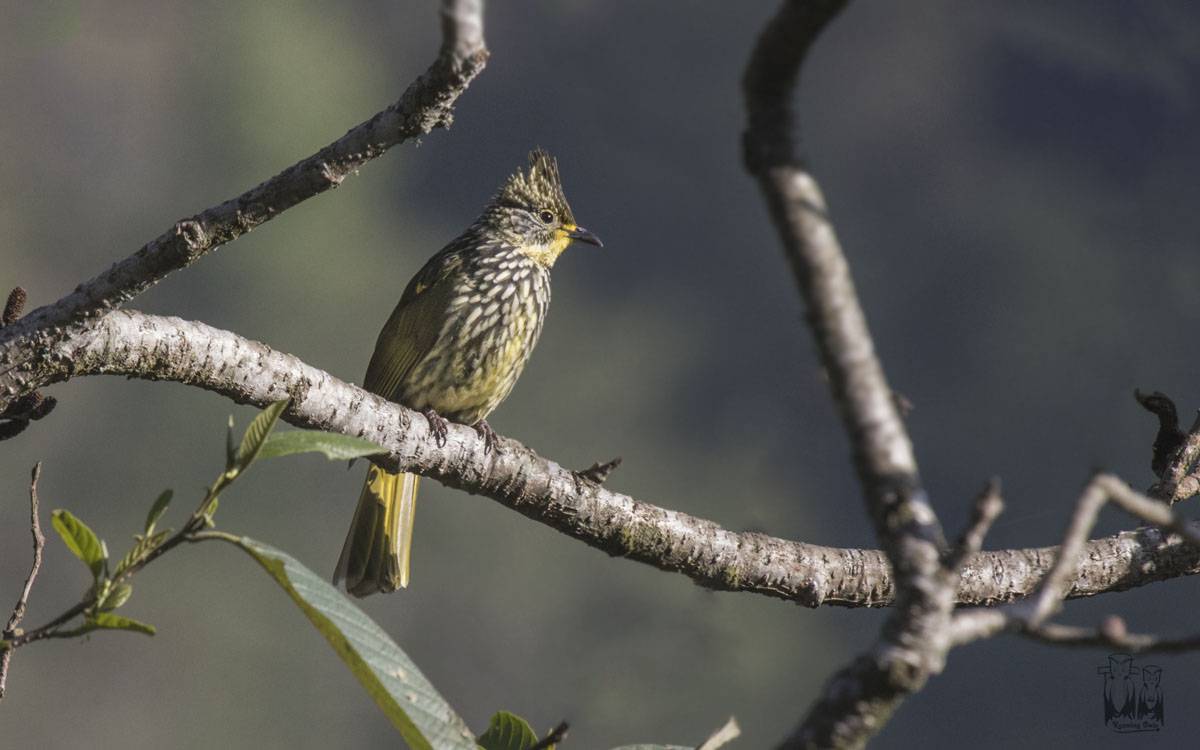
The Striated Bulbul (Pycnonotus striatus) is found from Eastern Himalayas to all the way upto Vietnam.
Now we were in overdrive mode and spotting a lot. Even without the clicking sound the birds seemed to appear and disappear. Most of the times we had enough time to click few pictures. We were happy though because most of them were lifers for us. The word “lifer” is the word birders use to point to a bird one sees for the first time in their life. In the initial years of birding every birding trip means lifers but after years of birding , the hard to find birds are the remaining one’s and hence lifers are a rarity. One has to travel to different places to add new spotting.
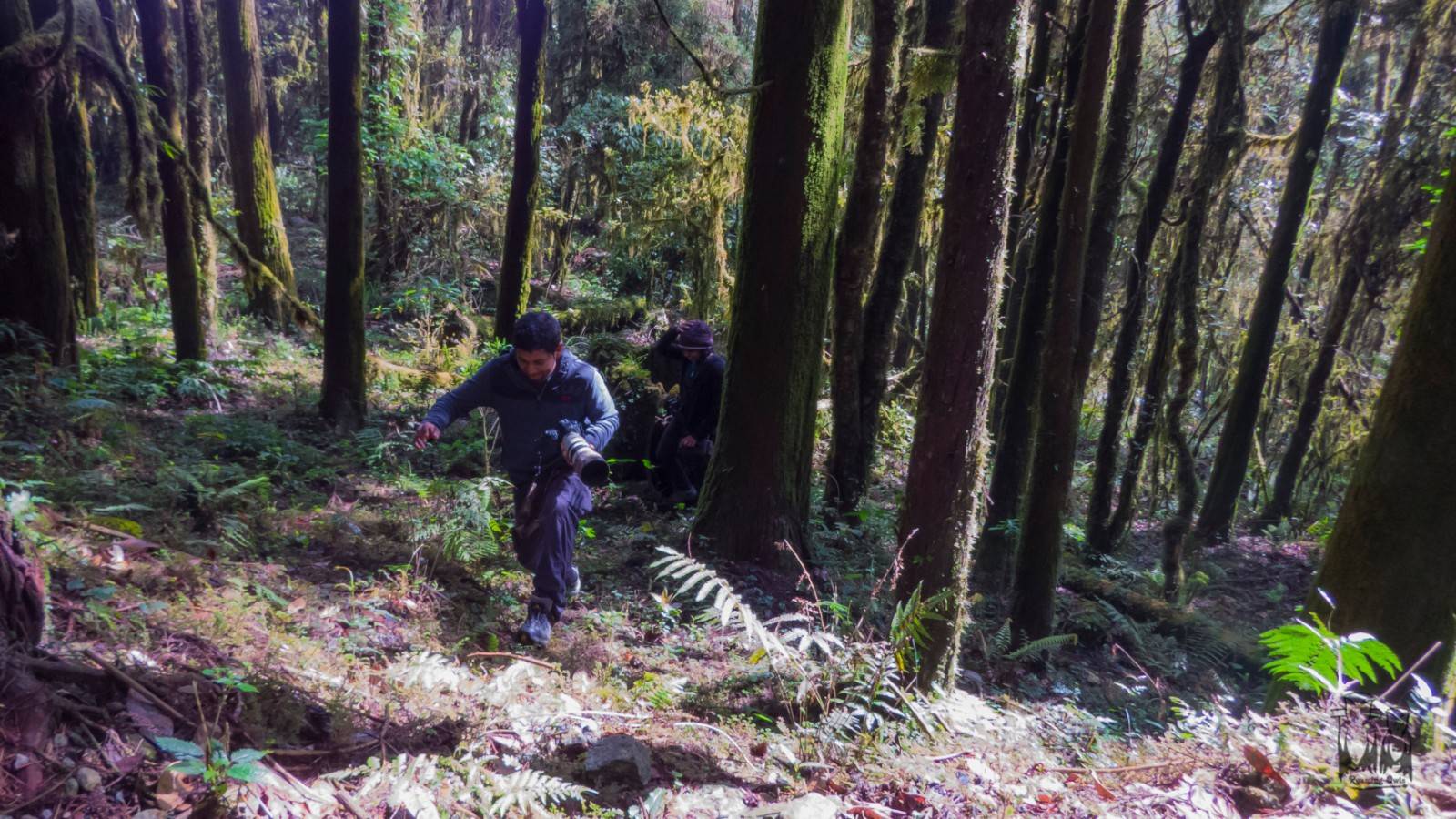
The beautiful forest was tough to navigate. The moment you stepped outside the jeep path, the jungle showed us who is the king.
This was one of the reasons for us to visit Neora valley in Sikkim. We wanted to see the birds of North Eastern India which are totally different from the rest of India. Sikkim is only a glimpse of what Arunachal Pradesh can offer but we wanted to do Sikkim first as we were after high altitude flowers as well. While all this was running in our mind we got a bonus in our birding trip. Mathi as keen as ever for a wildflower was the first to spot it. Orchid !
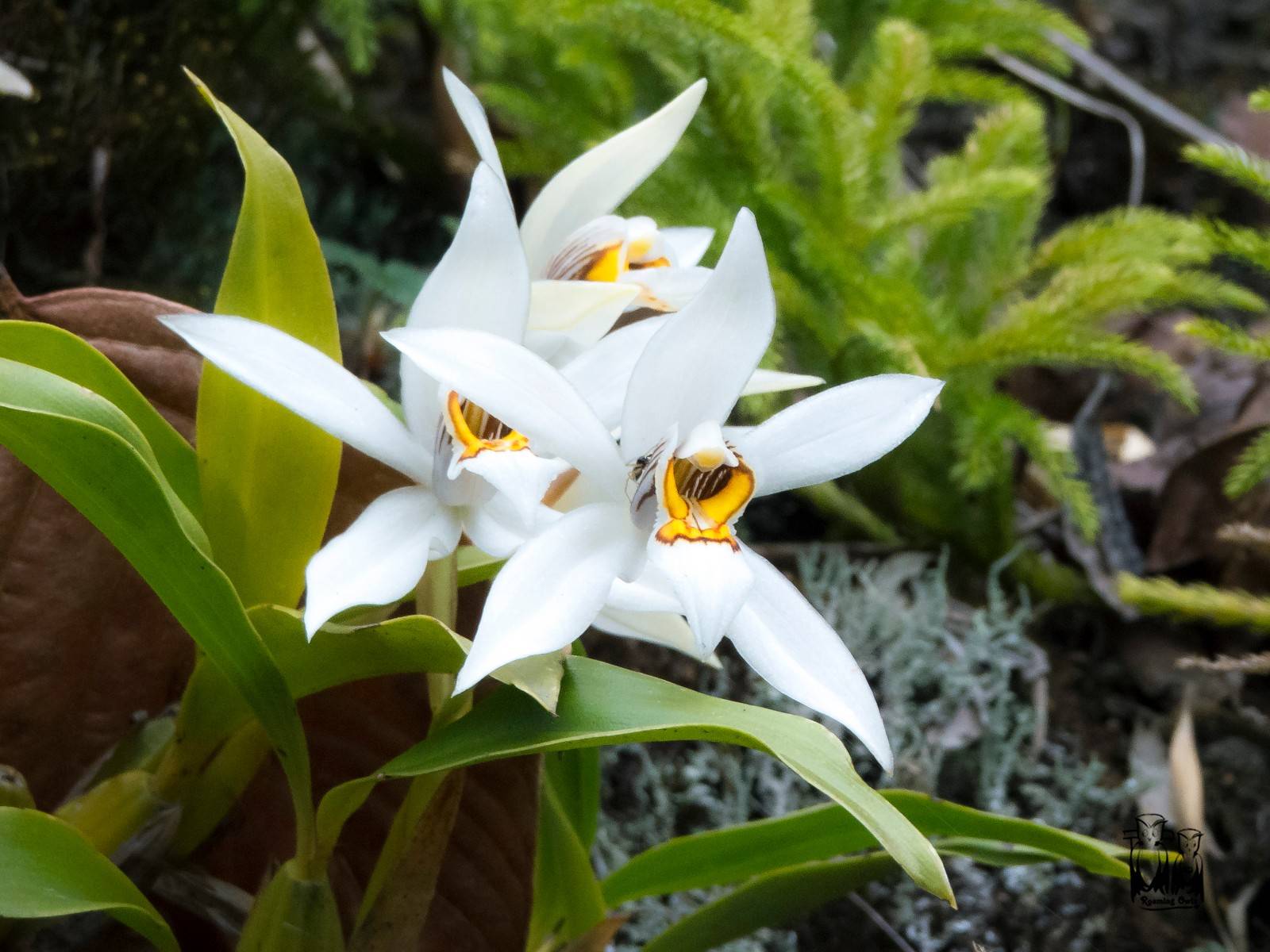
Coelogyne corymbosa – one of the several orchid species off the Himalayas. Himalayas, in particular the Eastern Himalayas is a biodiversity hotspot for orchids.
The beautiful wildflower was more refreshment to the mind as we searched for more birds and they kept on coming. On the path there were few flowering shrubs and we knew what this meant. Sun Birds. The sunbirds are nectar feeders and hence they are most often found around flowering bushes. They are one of the most colorful group of birds. Because of Tv most people in India are familiar with humming birds than sun birds. Humming birds are not found in India at all , so Sunbirds are Indian equivalent of humming birds. Before Long we had our first sunbird.
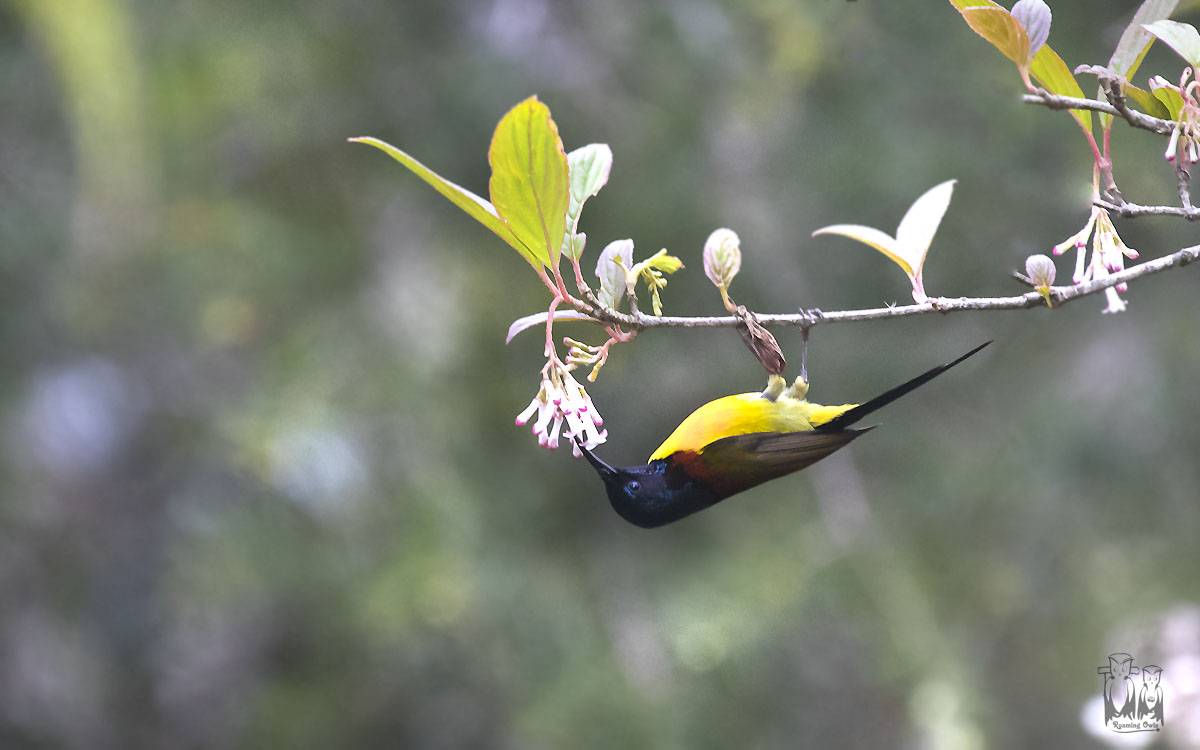
The green-tailed sunbird (Aethopyga nipalensis) is one of the many sunbirds we saw during our birding in Himalayas.
As we moved on, the place had become even more serene with moss covered trees giving a complete green cover. It had already become afternoon but we did not even bother breakfast as we were too busy birding. Finally we reached an end point where we decided to eat. In a place like this even while eating there is always disturbance but disturbance of a welcome kind. Chestnut sided laughing thrush is a beautiful bird which has some how got accustomed to human presence. He was freely roaming all around us and with such a beautiful bird at our footsteps how can we eat before clicking ?
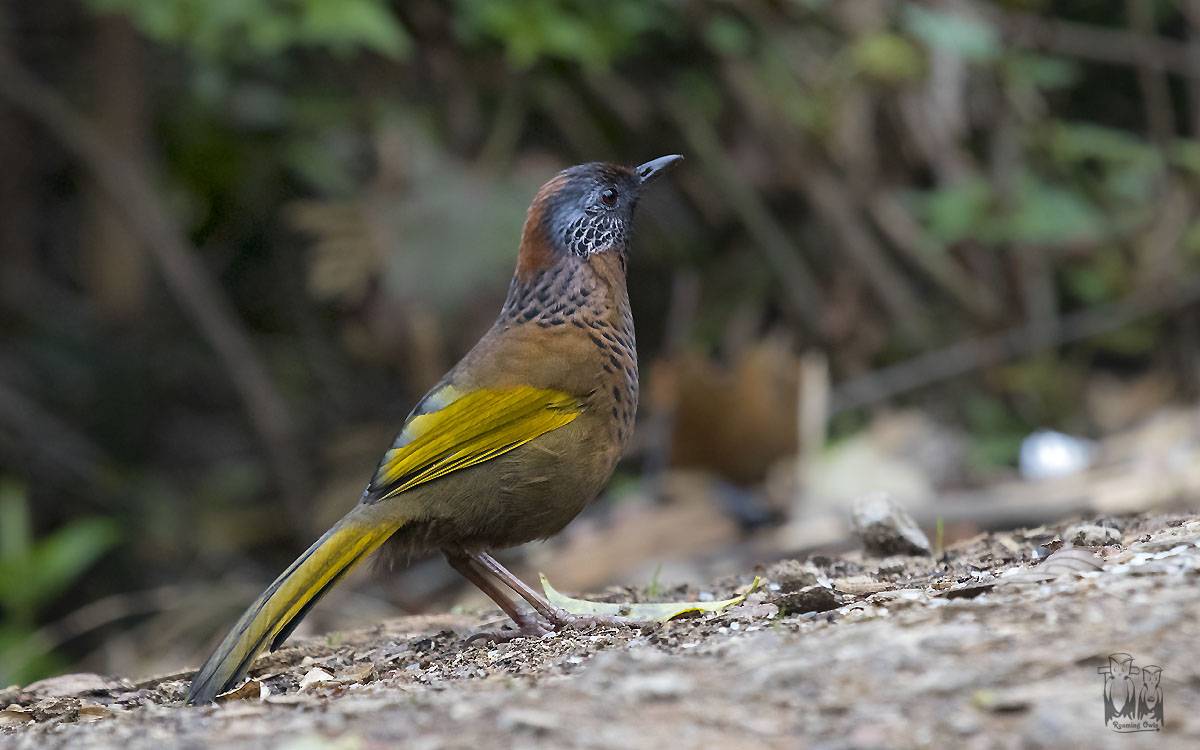
Chestnut sided laughing thrush was the most friendly of the lot and possibly the most colorful of the lot too.
Once the eating was over the same route all over again. We had more birds on our way but it had started to get dark with some rain clouds. With the dark clouds taking a picture was becoming an issue. There was a very dense patch of bamboos and it was here we found the most searched birds of all. The Parrot Bill and Chestnut Headed Tesia. Even though we saw them we never could manage a clear picture because of the low light conditions. But we were very happy that we saw them!
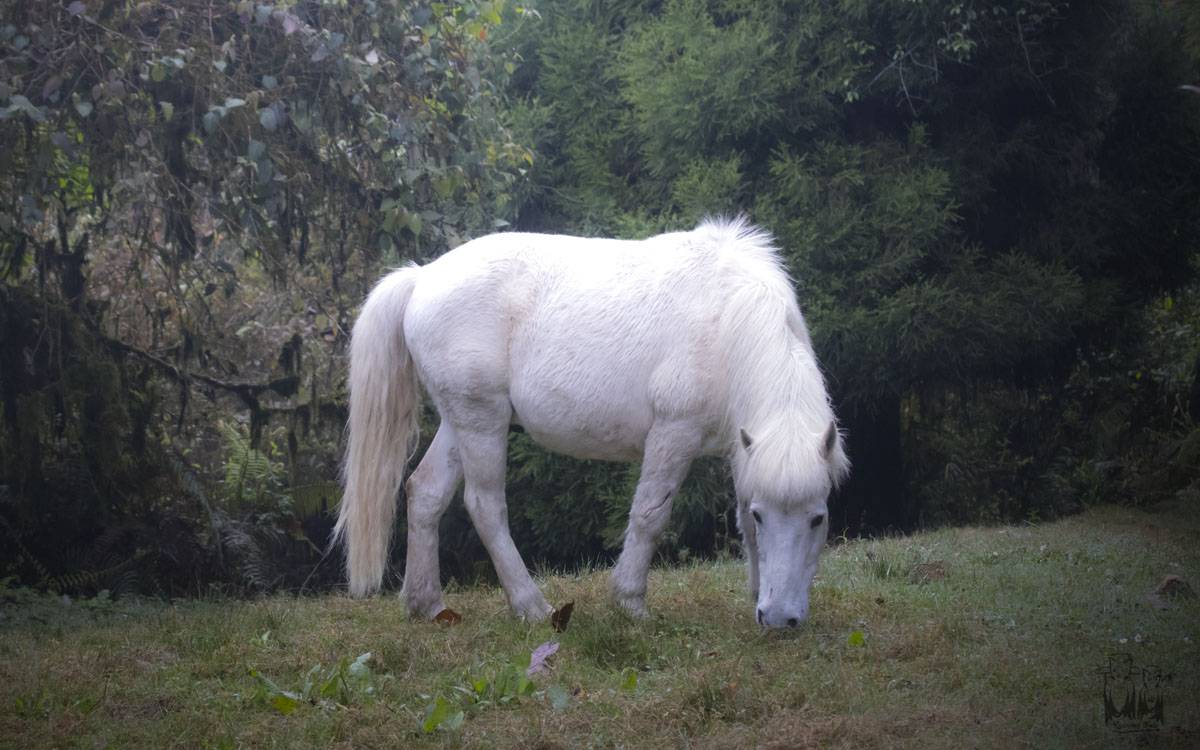
Inbetween all the birding there was a pleasant sight. A beautiful white horse grazing leisurely.
Finally it was time to start going back. It had become too dark to even spot now. It was only 4 in the evening but when you are inside the forest sometimes it gets dark quickly, partly because of the canopy as well as shadow of the mountain. We got on to the vehicle and started turning back but it seems neora had more to offer. This time a Khaleej Pheasant ! He was trying to cross the road but ran away as we made the turn. We managed to get a blurry click but we were more than happy to add him to our list of birds seen on that day, A day that will remain in our memories as one of the best birding days ever.

That is nice to know!!
My visit to Neora was also as you have narrated. Felt like reading my own trip.
Thanks a lot for reading it! Neora Valley is really awesome for birding!
The pics are very gud , thanks Mathi for sharing this.